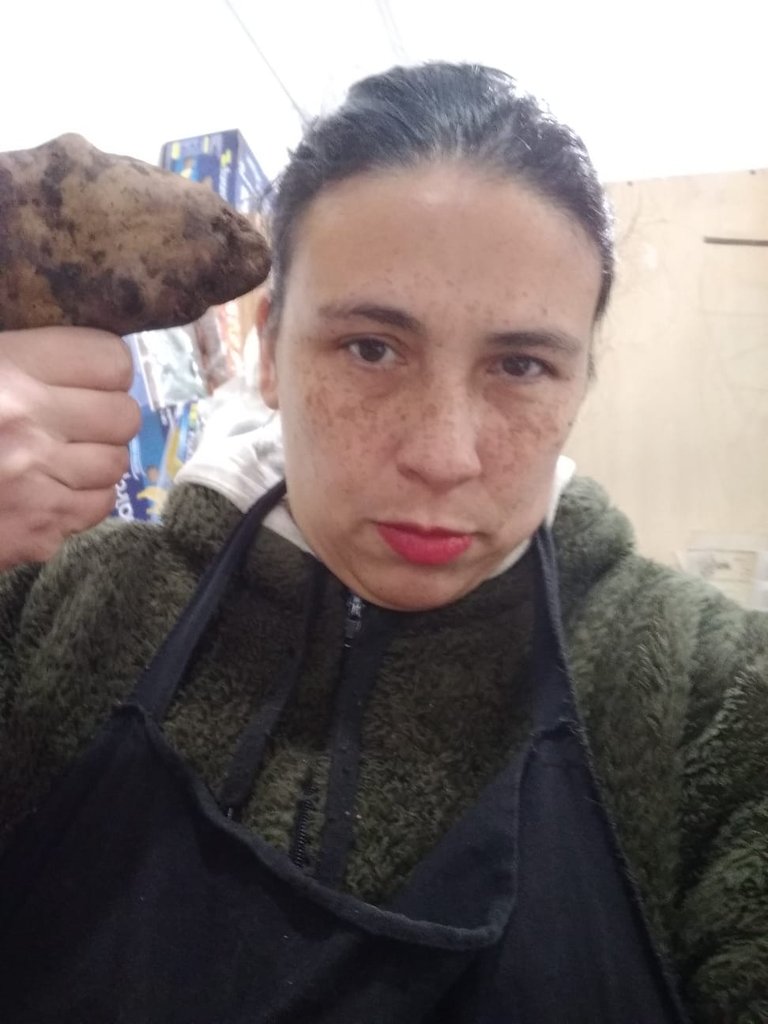
Hola, soy Márluy, y soy epiléptica. Ese seria mi saludo si hubiese una asociación de epilépticos anónimos, pero no lo hay.
Para quienes saben sobre la epilepsia, tendrán la imagen de las personas que convulsionan y quedan inconscientes, pero existen otros tipos, siendo la segunda más conocida, aquella que se manifiesta con crisis de ausencia, en la que pierdes la noción de quien eres y en donde estás.
En mi caso, mi abuela materna tenía la versión común de epilepsia, pero a mí me tocó una silenciosa, que se activó saliendo de la adolescencia.
Pero la historia empieza mucho más atrás. Cuando tenía 7 años y mi madre decidió cambiarme de escuela a una mucho mas lejos de casa, con lo cual se afianzó mi miedo a ser abandonada. Desde entonces, la niña extrovertida cambió hacia el otro polo, y eso, por supuesto no fue bien visto, pero tampoco le buscaron el origen a ese cambio.
En casa se conformaron con pensar que era "rara" como mi papá: silencioso y retraído, pero mientras tanto, en mi cabeza pasaban cosas.

A mamá no le gustaba una hija rara teniendo un hijo común, pero aunque no era feliz siendo diferente, tampoco quería cambiar para complacer, solo quería respuestas que nadie era capaz de darme.
Yo iba mas rápido que todos en clases, y hasta en mis primeros empleos, y fue esa rapidez la que a los 23 años me dio mi primer sacudón. Tres crisis seguidas, causadas por stress, me hacían no querer seguir en pie, por eso mi cerebro hacia ¡desastres! Bulimia, anorexia e insomnio crónico durante un mes, me llevaron (por suerte) a un diván.
Recuerdo de esa época no parar de llorar casi todo el día, y todos me veían como una verdadera loca, inclusive yo misma.
De esa primera visita, entendí que mi cerebro jugaba en contra, pero igual tocaba seguir, pues en ese entonces era quien proveía en casa, y pagar una terapia no entraba en presupuesto.

Cuatro años después, una visita a la UCI para lavar mi estomago con carbón líquido, prendió alarmas peores que las que anuncian las bombas durante las guerras, pero solo yo las escuchaba, para los demás era solo ganas de "llamar la atención". De ese incidente no recuerdo mucho, salvo despertar en una sala llena de tubos y agujas, y preguntar qué hora era y qué día también.
De ahí en más visité una serie de psiquiatras, los mismos que pedía en mi adolescencia y mi madre decía que no eran necesarios, aunque yo sentía que si. La luz apareció cuando llegué a mi terapeuta Abrahan Genis, quien dio con un diagnóstico que si se aproximaba a lo que yo sentía: ¡eres disritmica!
Mi cerebro simplemente va más rápido, pero en esa rapidez excesiva se cansa y "se apaga" apareciendo la crisis de ausencia.
En principio sentí que todas las piezas encajaban, pero a la vez me daba un miedo increíble tener que lidiar con esa nueva realidad que ya tenía nombre y tratamiento. Por suerte, 4 años de psicoterapia y medicación me enseñaron a vivir con esta condición, que todavía existe, pero que en mayor o menor grado he logrado controlar.
Parte de "la cura" fue educar a mi núcleo familiar a vivir conmigo y con mi cerebro, empezando por la aceptación sin burlas ni reproches, creo que ese paso ayudó a que yo volviera a entrar en el carril de la "normalidad".
Ahora estoy parcialmente equilibrada para los demás, pero en mi cabeza, considero que ando al 90% de mi normalidad. Con la maternidad dejé la medicación y me he mantenido de cierta manera estable, aunque los fantasmas no terminan de mudarse, pero ya los reconozco y cuando se activan, sé como reaccionar.

No ha sido un camino fácil, pero encontré a quien realmente ayudó a que recobrar el equilibrio necesario, y sobre todo me enseñó que ser "normal" era aburrido, por lo que en lugar de sentirme mal, debía ver las virtudes de mi condición.
Ahora me encanta andar desentonando entre lo que los demás consideran que debo ser, sin prestar mucha atención al qué dirán, procurando que cada vez me afecte menos escuchar cuando me dicen loca... pues si realmente lo estoy, es algo de lo que siento orgullo haber podido controlar.

Hello, I'm Márluy, and I am epileptic. That would be my greeting if there were an association of anonymous epileptics, but there isn't.
For those who know about epilepsy, they will have the image of people having convulsions and losing consciousness, but there are other types, with the second most well-known being absence seizures, in which you lose the sense of who you are and where you are.
In my case, my maternal grandmother had the common version of epilepsy, but I got a silent one, which was triggered as I entered adolescence.
But the story starts even further back. When I was 7 years old and my mother decided to change my school to one much further from home, which made my fear of abandonment solidified. Since then, the outgoing girl shifted to the other pole, and that, of course, was not well-received, but the origin of that change was also not sought.
At home, they settled with thinking that I was "weird" like my father: quiet and withdrawn, but in the meantime, things were happening in my head.

Mom didn't like having a strange daughter having a common son, but although I wasn't happy being different, I didn't want to change to please, I just wanted answers that no one could give me.
I was ahead of everyone in classes, and even in my early jobs, and it was that speed that gave me my first jolt at 23 years old. Three consecutive stress-induced crises made me not want to continue standing, so my brain was a mess! Bulimia, anorexia, and chronic insomnia in just a month led me (luckily) to a therapist's couch.
I remember from that time not being able to stop crying almost all day, and everyone saw me as truly crazy, myself included.
From that first visit, I understood that my brain was working against me, but I still had to continue, as I was the provider at home at that time, and paying for therapy wasn't in the budget.

Four years later, a visit to the ICU to wash my stomach with liquid charcoal raised worse alarms than those announcing bombs during wars, but only I heard them, for others, it was just a desire for "attention". I don't remember much from that incident, except waking up in a room full of tubes and needles, and asking what time it was and what day it was.
From then on, I visited a series of psychiatrists, the same ones I asked for in my adolescence and my mother said were not necessary, although I felt they were. The light appeared when my therapist Abraham Genis arrived, who came up with a diagnosis that was closer to what I felt: you are dysrhythmic!
My brain simply moves faster, but in that excessive speed, it gets tired and "shuts off," leading to the absence seizure.
At first, I felt like all the pieces fit together, but at the same time, I felt an incredible fear of having to deal with this new reality that now had a name and treatment. Luckily, 4 years of psychotherapy and medication taught me to live with this condition, which still exists, but I have managed to control it to a greater or lesser extent.
Part of "the cure" was educating my family nucleus to live with me and my brain, starting with acceptance without mockery or reproach. I believe that step helped me return to the "normalcy" lane.
Now I am partially balanced for others, but in my head, I consider myself at 90% of my normality. With motherhood, I stopped taking medication and have managed to remain stable in a certain way, although the ghosts have not completely moved out, but I recognize them and know how to react when they arise.

It hasn't been an easy road, but I found someone who truly helped me find the necessary balance, and above all, taught me that being "normal" was boring, so instead of feeling bad, I had to see the virtues of my condition.
Now I love to stand out by being different from what others consider I should be, paying little attention to what they might say, trying to let it affect me less each time I hear them call me crazy... because if I really am, it is something I am proud to have been able to control.
Foto/Photo by: Geralt from Pixabay and @mamaemigrante
Edición/Edited by @mamaemigrante using canva
Tattooworld animated banner
Translated and formatted with Hive Translator by @noakmilo.

Posted Using InLeo Alpha



